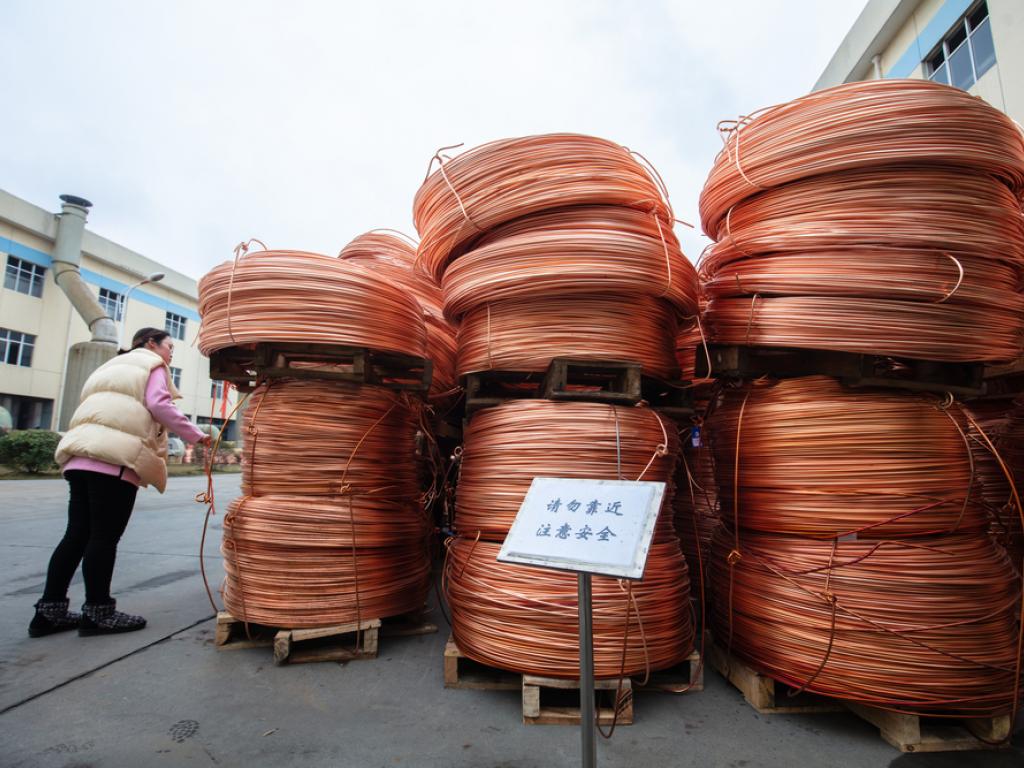Copper To Enjoy Structural Bull Run, Bank of America Lifts Targets
Author: Stjepan Kalinic | September 30, 2025 10:32am
Bank of America (NYSE:BAC) has upgraded its copper price forecasts, warning that the global supply squeeze is deeper and more persistent than previously thought.
The combination of resilient demand, depleted stockpiles, and enduring mine disruptions leaves the market primed for new records.
According to their latest note, the bank now expects the metal to average $11,313 per ton in 2026. That’s a 11% increase from the earlier estimate, and $13,501 in 2027, up 12.5%.
See Also: Marjorie Taylor Greene Loads Up On Six-Figure Treasury Bill— Diversifies Portfolio
Analysts highlighted setbacks at Freeport's Grasberg operation in Indonesia, Codelco's El Teniente in Chile, and Kamoa-Kakula in the Democratic Republic of Congo. Delays at Teck Resources' Quebrada Blanca II project and the indefinite suspension of First Quantum's Cobre Panamá mine have further tightened supply. Refining charges have collapsed, signaling a shortage of raw material even as smelting overcapacity in China continues to weigh on margins.
Yet, the demand remains resilient. In China, heavy investment in power grids and renewable infrastructure continues to drive copper consumption. The expansion of artificial intelligence data centers adds a new source of demand, experts note.
Europe, after months of industrial stagnation, is showing early signs of recovery. Meanwhile, inventories in London remain at historic lows, risking short squeezes should consumption rise. Spare stockpiles have already been diverted to the U.S. to mitigate tariff risk. As a result, the market has become vulnerable to sudden price fluctuations.
"Copper will post its largest deficit since 2004," Michael Haigh and Benjamin Hoff from Société Générale wrote in the latest note, estimating that losses from Grasberg alone could reach 273,000 tons before year-end, worsening what was already expected to be a substantial shortfall.
The copper challenge is fundamental. A mine typically takes 15 to 20 years to progress from discovery to production. That fact means today's shortages cannot be addressed quickly, even with higher prices as an incentive. Environmental opposition, water scarcity, and community resistance are adding further delays.
For example, the collapse of negotiations over water rights in Chile has hindered several large projects. At the same time, regulatory uncertainty in Panama highlights the political risk of relying on supply from emerging markets.
Bank of America's raised targets suggest the metal has entered a structural bull phase. Prices are now forecast to climb steadily through the decade, supported by long-term electrification trends and chronic underinvestment in new mines.
Other major banks see more moderate outcomes. Goldman Sachs sees the metal at $10,750 by 2027, JPMorgan projects copper at $11,000 per ton in 2026, Citi outlines a range of $11,000–$12,000, and Deutsche Bank believes prices will remain above $10,000 as the global market shifts deeper into deficit.
Read Next:
Image: Shutterstock
Posted In: BAC





